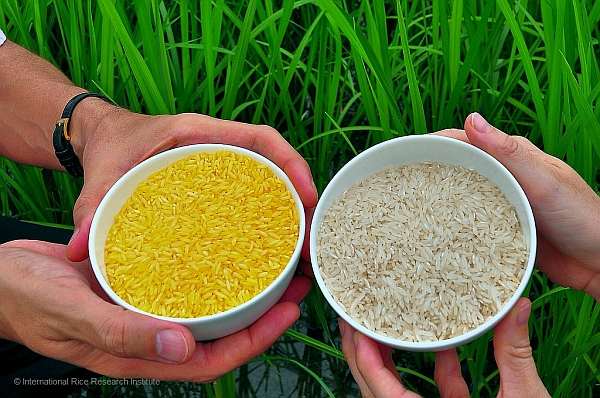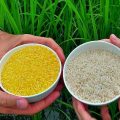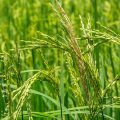The legislature will support the distribution of the pro Vitamin A-rich Golden Rice given studies proving efficacy in reducing Vitamin A deficiency (VAD) which adversely affects 250 million children’s immune system.

Recognizing that Golden Rice will significantly supplement Vitamin A needs of the most needy children and pregnant women, the Senate committee on agriculture is open to supporting Golden Rice.
“Of course we welcome that,” said Cynthia A. Villar, Senate committee on agriculture and food chairperson at the Nutrition & Healthier Rice Congress.
Helen Keller International (HKI) is set to carry out tests of the efficacy of Golden Rice on actual VAD patients. And government may find it appropriate to release it to the market.
“It’s good if they (researchers) can justify it, we will give it to more people,” she said.
There has indeed been reports about Golden Rice that may not be favorable, according to Villar. It is known to involve a breeding technology, genetic engineering, making it a genetically modified organism (GMO).
But consideration of its benefits to the health of Vitamin A-deficient poor population must be important.
“There are some people opposing it as a GMO. But me, I welcome that if it will give more nutrition to affected people,” said Villar.
Nutrition should always be prioritized, according to Villar, in her keynote address at the Congress held at the International Rice Research Institute (IRRI) in Los Banos.
IRRI is a co-developer of Golden Rice, along with the government-run Philippine Rice Research Institute.
“I believe agriculture does play a significant role to improve public health and nutrition by addressing cases of malnutrition and micronutrient deficiencies which remain leading nutritional problems,” Villar said.
Experts belonging to the Golden Rice Network (GRN) are subjecting Golden Rice through rigid food and environment safety procedures.
These are overseen by the government including the National Committee on Biosafety of the Philippines and Bureau of Plant Industry.
The food safety tests include allergenicity, toxicity, and bioavailability—showing ability of the human body to absorb the Vitamin A from the crop.
HKI has declared plans to include Golden Rice as one of its VAD solutions upon completion of efficacy studies. It is concerned that those affected by VAD total to 190 million pre-school children and 19 million pregnant women.
“In the Philippines approximately 1.7 million children aged six months to five years and an additional three out of every ten school-aged children have VAD, as do one out of every five pregnant and lactating mothers,” reported the GRN.
Iron deficiency is the most alarming of the micronutrient deficiencies affecting infants, 56.6 percent, pregnant women, 50.7 percent, and lactating women, 45.7 percent, Villar cited.
Moreover, this nutrition data of the Food and Agriculture Organization (FAO) showed seriousness of VAD too.
“Vitamin A status of the country is considered severe subclinical deficiency also,” Villar said, citing FAO.
The toll of these micronutrient deficiencies on the economy is estimated at $3.5 trillion per year globally in lost productivity and direct health care costs.
“I commend IRRI for their initiatives to enhance nutritional content of rice which is widely grown and eaten not only in the Philippines but in other parts of the world,” said Villar.
The Golden Rice Project has been pursued by the GRN in the hope of reducing VAD and Vitamin A deficiency-related disorders (VADD).
Iron, vitamin A, iodine, and zinc are considered to be vital micronutrients. Low intake of these nutrients are the most damaging of micronutrients. Deficiencies in their intake are mostly found among the poor in Asia whose main staple is rice.
“Dependence on rice as the predominant food source, therefore, necessarily leads to VAD, most severely affecting small children and pregnant women,” according to the GRN.
The World Health Organization reported in 2012 that around 250 million preschool kids are inflicted with VAD. Vitamin A supplementation in these children can save 33 percent of all deaths among five-year-olds involving 2.7 million children.
VAD affects the immune system and exposes the human health to infection including HIV-AIDS. As much as 40 percent of children below five are affected by VAD.
“For the 400 million rice-consuming poor, the medical consequences are fatal: impaired vision— in extreme cases irreversible blindness; impaired epithelial integrity, exposing the affected individuals to infections; reduced immune response; impaired haemopoiesis (and hence reduced capacity to transport oxygen in the blood) and skeletal growth; among other debilitating afflictions,” said the network.
“In many countries VAD leads to large numbers of vision-impaired people and increased mortality due to a weakened immune system. Many more cases of ailments caused by sub-clinical deficiency levels go undetected.”
Golden Rice can provide the RDA (recommended dietary allowance) for Vitamin A needs in rice-based societies, according to bioavailability studies.
“This improved version (of Golden Rice) produces 31 microgram per gram and more beta-carotene, which is more than enough to supply the required amounts of beta-carotene, according to the bioavailability results,” said GRN.
The American Journal of Clinical Nutrition , a peer-reviewed scientific publication, has carried out a study that showed that one cup of cooked GoldenRice is enough to fill one half of an adult’s recommended daily intake of Vitamin A.
###
For any questions or interview requests, please contact Ms. Analiza C. Mendoza, 0921-338-3816, 0916-266-6604.






